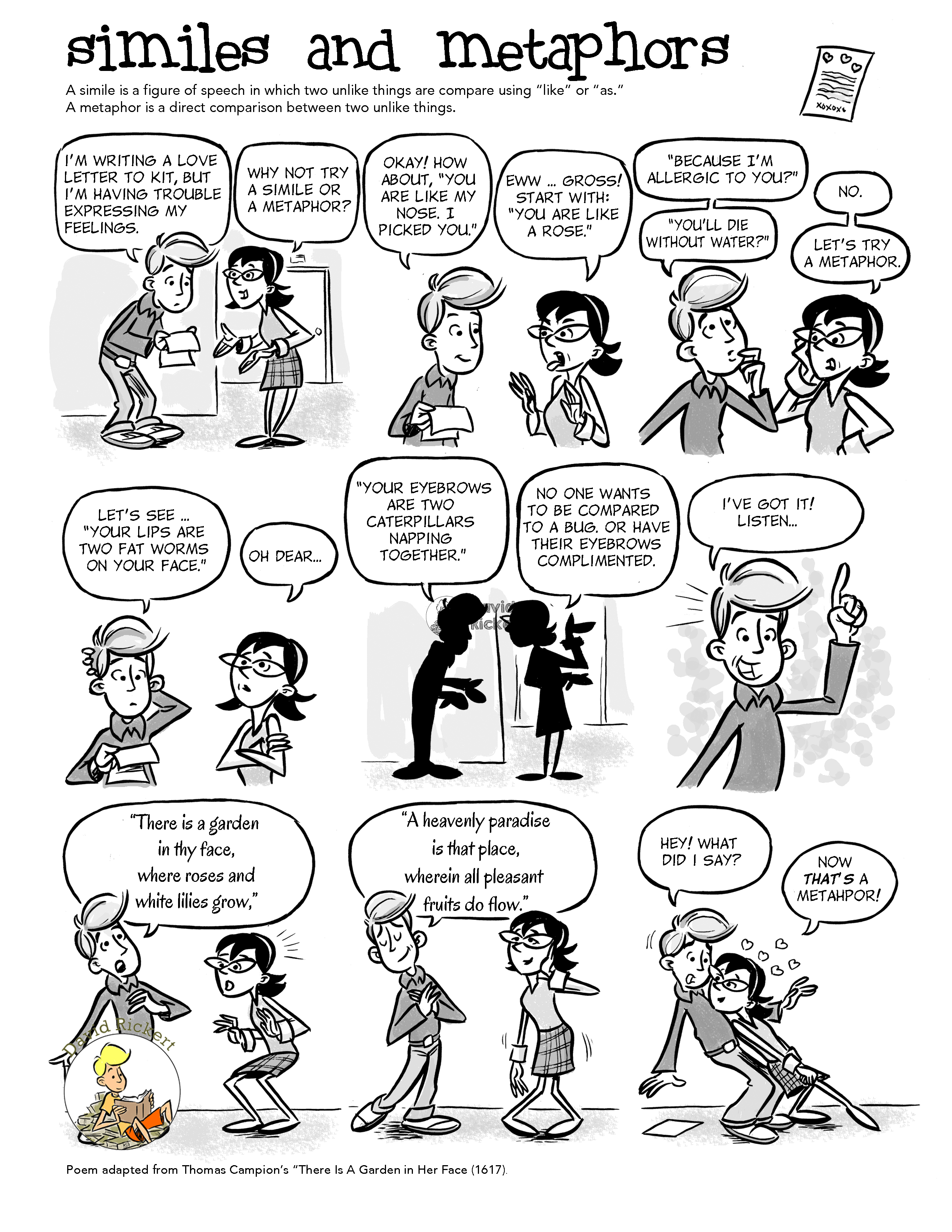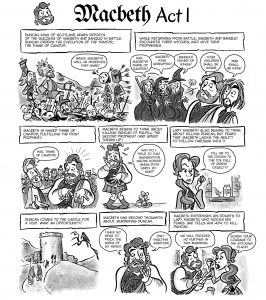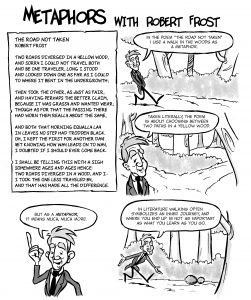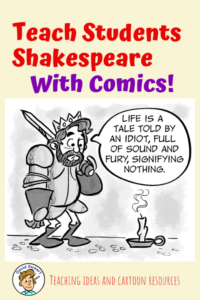
I’m frequently asked by other people what books I teach. No one ever asks what poems I teach.
There’s no question that language arts curriculum centers around novels and our classroom can get pretty novel heavy if we’re not careful. We all know about the need for non-fiction. But let’s not forget poetry, which can be the genre that gets left out. We might do a few poems here or there that tie in thematically with what we’re reading, but we don’t give it room for serious study.
However, there are many reasons why we should include more poetry in the classroom. In fact, last year I eliminated a novel to make sure I had four good weeks throughout the year to study poetry. Here are five reasons why you should open up your lesson plans to include more poems.
Students can’t fake read them.
We all know fake reading is a problem in the language arts classroom. Give a kid a novel and he may decide to go online to avoid doing any reading. I have had students proudly say they have gone through high school without reading a single novel.
However, if you give a student a poem in class they have to read it. And then they have to analyze it and say something about it. They may decide not to read novels, but they can’t escape a poem that’s sitting on their desk right in front of them. A healthy diet of poems is a great way to ensure that students are building critical reading skills. Furthermore, I had a college English professor tell me that the best way to become a better reader is to become a better reader of poetry. (I’m not sure if that’s true, but I’m going with it.)
They can add diversity to your curriculum.
For a dual enrollment class that I teach, we are not allowed to have students buy books. Thus we are restricted to those works in the public domain, which cuts down on the diversity of works available- lots of dead white authors. Many of my students don’t see themselves reflected in those works.
However, because poetry from all times and places is readily accessible online it’s an easy way for me to add authors that reflect the diversity in my classroom. The modern poetry community is very diverse, and tackle a number of issues related to diversity as well (more on this below.)
Even in my freshman class where students are required to purchase their books, we still have a curriculum dominated by Shakespeare, Wiesel, and Steinbeck. I make sure in our poetry unit that we have a wide variety of authors from different races, cultures, and backgrounds to offset the lack of diversity in the works I’m required to teach.
Poetry allows you to address important social issues
Especially modern poetry. Check out Warsan Shire’s “Home.” Or Clint Smith’s “Counterfactual.” Or Maggie Smith’s “Good Bones.” These poets and their poetry speak to modern issues in ways relevant to our students.
These poets prove that poetry is more significant than it ever has been and has found a home in our short attention span world. Many of these poets deal with significant social issues.
Not to mention the emergence of spoken word poetry, which my students really love. Here’s the best list of spoken words poems I’ve come across. All are geared towards students, although all might not be appropriate for lower grades. There are even some spoken word competitions for high school students and you can watch poets that are the same age as your students. Maybe it will inspire them to enter a competition!
Poets have active lives outside the classroom in the worlds our students inhabit.
Many living poets have an active social media presence because that’s how they promote their work. They also use social media to promote other poets’ work. Following a particular poet’s Twitter feed can be an enlightening way to make an author come alive.
If students aren’t old enough to follow poets on Twitter or Instagram, you can bring up their feeds in the classroom and showcase how they engage with their followers and what causes they promote (many poets are politically active.)
Furthermore, most poets are easy to locate and don’t mind if you contact them if you have questions about their poetry. A lot of them are gracious enough to Skype with you and your students to discuss their work. Unlike novelists, who tend to work through agents, most poets can be contacted directly. And there’s nothing like knowing the person behind the work you’re reading.
Poems don’t require much prep time
This is a pretty flimsy reason, but it’s real. When I’m teaching a novel I spend a considerable amount of time rereading the novel in addition to planning. With poems, that time is cut down considerably. If you’re finding yourself a little burned out from too much planning because your class is novel heavy, plan a unit of poetry to give yourself a chance to catch your breath.
So how do you find poems to teach?
The worst thing you can do is go to Google and type in “poems about _____” because there is a lot of bad poetry out there. You’re better off looking for poetry at the Poetry Foundation or poets.org where they screen for quality. In fact, poets.org has a great section of poetry for teens collected by subject. This year I had my students vote on what subject they wanted to read poems about and chose the top two. I selected about six poems from each of the categories and away we went.
I also like to teach a unit on sonnets. Sonnets are great because they are a predictable format, easy to learn how to read properly, and have been written for years, so you can read sonnets from as far back as Shakespeare to as recent as Terence Hayes. As a final project I have my students do an analysis of a sonnet they have chosen themselves from the sonnet page on poets.org. (Don’t have them just use google to find poems or they’ll end up at sites like poemhunter.com where anyone can submit poetry. You want control over the process.)
I also like to teach several poet by a particular author. I have used the poetry of Walt Whitman and Emily Dickinson successfully. This year I’ve done a unit on Rita Dove and in another class we read Clint Smith III’s Counting Descent, both of which my students loved.
For more poetry resources, check out Teach Living Poets. Lots of great ideas there, and a terrific community. Also check out #TeachLivingPoets on Twitter.
For a fun activity with poetry that you can do anytime, check out You Call That A Poem? Reading Weird Poems In Class.
For a fun model text activity with poetry, check out Teaching Poetic Devices Using Impostor Poems.
Learning should be fun! Check out my Teachers Pay Teachers store for fun resources like the ones you see below.









